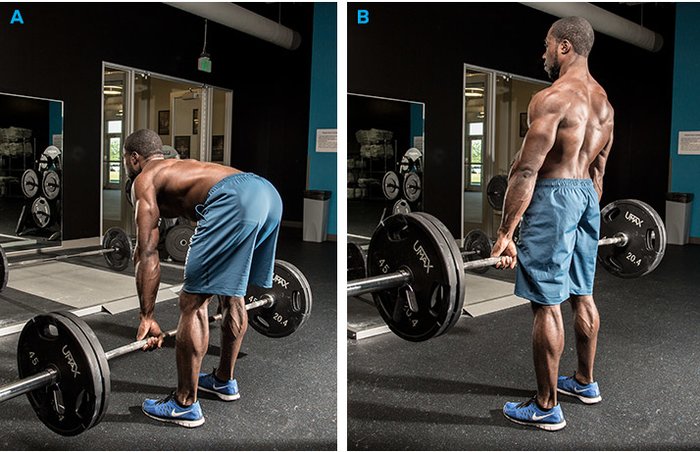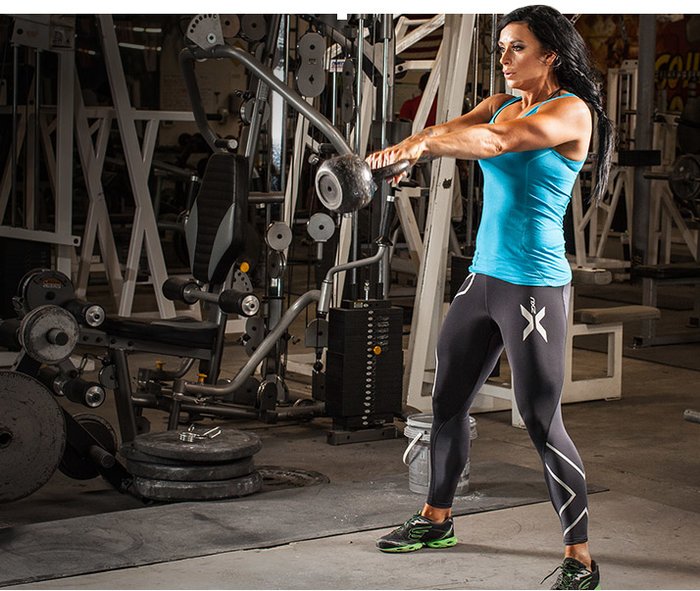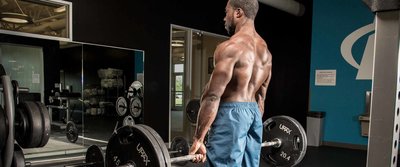It may no longer be breaking news that full-range conventional deadlifts are the king when it comes to building muscle and strength. To perform a deadlift, both the bar and the body move through a huge range of motion while recruiting most of the body's muscle mass, making the exercise stellar for overall growth.
Here's the rub, though: A lot of lifters can't do full-range conventional deadlifts. If you're among this crew for any reason, such as poor mobility or injury, there's no need to lament the loss of your deadlift. With the right alternative exercises, you can gain its benefits without performing the full-range lift!
When Deadlifting Isn't an Option
Poor hip mobility is usually to blame in individuals who can't deadlift. How do you know if limited hip mobility affects you? If you can't maintain a flat back in the bottom position of the deadlift, chances are you don't have the hip mobility to do full-range, conventional deadlifts.
Although most people often try to blast through a lifting barricade, in this case it's better to maneuver around it. You can juke the obstruction by limiting the range of motion and/or selecting deadlifting-esque exercises that don't load (stress) the back and body as intensely as deadlifting does.
Here are four good alternatives:
1. Rack Pull
This partial-range deadlift is a hip-hinging gem. With rack pulls, the barbell is elevated off the floor using the pins or safety bars in a squat rack. It's the same strength-building movement as the deadlift, condensed into a smaller range of motion. Rack pulls are a great solution for people who lack the mobility to full-range deadlift with safe form.

Rack Pull
Set a bar up in a rack so that it's level with your knees. With your legs touching the bar, hinge—push your hips back—into a position that allows you to grab the bar with your back flat. Have someone watch you, or film yourself, to determine if your back is indeed flat. If you can maintain a flat back in the bottom position, you have the mobility to pull from this position.
Continue to lower the pins from one workout to the next until you reach the lowest point at which you can hinge and keep your back flat. Continue training at each height until your mobility improves. Train using sets of 3-8 reps.
2. Romanian Deadlift
Like the rack pull, the Romanian deadlift, or RDL, trains the deadlift path utilizing a reduced range of motion. Unlike the rack pull, this is a top-down rather than bottom-up lift, which is advantageous for finding a safe range of motion.

Romanian Deadlift
Rather than setting up a loaded barbell on the floor, set one up at knee height on the hooks outside the squat rack. Step up to the bar until your legs are touching it, pick the bar up, and take a step back with each leg. Reset with your legs square, and hinge your hips backward while keeping the bar in contact with your legs. Descend as far as you can while maintaining a flat back, which will likely bring the bar to a spot just below your knees. Complete your reps in this range of motion.
For strength, do sets of 3-6 reps. For hypertrophy, perform sets of 8-15 reps. This is a particularly good posterior-chain builder.
3-4. Pull-Through and Kettlebell Swing
These two posterior-chain-building beauties are great for anyone who wants to develop a great backside but can't handle the heavy loading of rack pulls and RDLs. Pull-throughs and kettlebell swings utilize a similar hip range of motion and can be trained using high-rep sets, making them great for conditioning the hips and hamstrings while also building muscle.

Kettlebell Swing
Swinging a kettlebell, however, presents a serious core-stability challenge. If you feel ill-prepared to maintain a tight core and neutral spine while swinging, stick to pull-throughs in the cable rack. They don't challenge core stability as intensely as swings do, but they'll still allow you to mimic the movement.
Complete sets of 10-20 reps to build posterior-chain endurance and an enviable derriere.
Addressing Poor Hip Mobility
In addition to trying these deadlift alternatives, be sure to incorporate hip-mobility drills into your programming. By improving your strength with partial-range deadlifts and working on your hip mobility, you'll eventually be able to do conventional deadlifts with good form.
Here are two great drills that, when trained consistently, improve hip mobility. Add these drills to your typical training warm-up before every single workout. Complete 1-2 sets of 5 reps of each exercise.
Single Leg Lowering with Band
Watch the video: 0:25
Standing Hip Controlled Articular Rotations (CARs)
Watch the video: 0:22
Long Live the Deadlift
Poor hip mobility isn't a deadlifting death sentence. Use these conventional deadlifting alternatives to build strength and muscle while improving your hip mobility. Be consistent and ferocious in your efforts, and you may well find yourself hoisting heavy iron from the floor sooner than you imagined!

